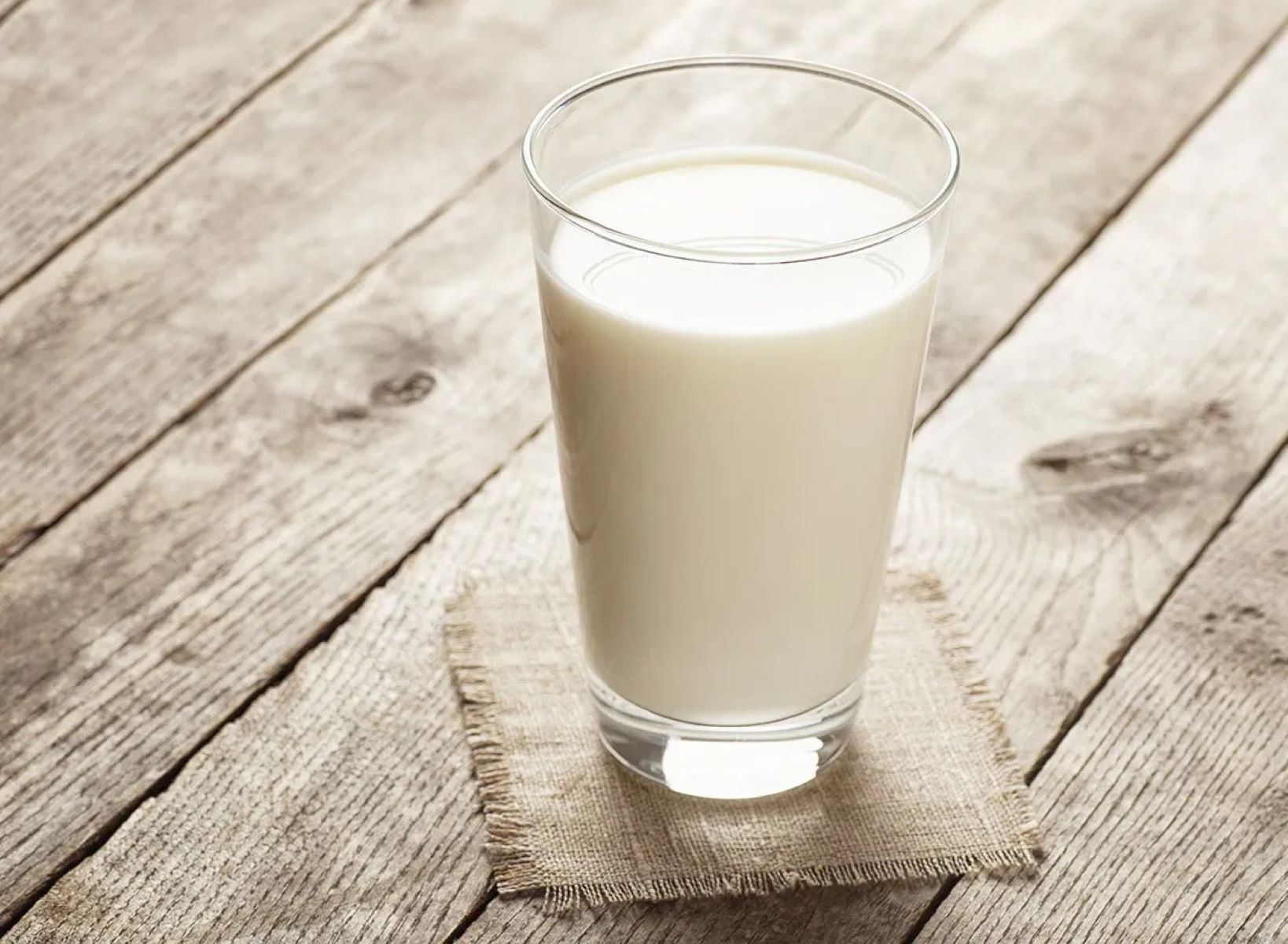Home>Home Appliances>Kitchen Appliances>How Many Calories In A Glass Of Red Wine


Kitchen Appliances
How Many Calories In A Glass Of Red Wine
Published: February 2, 2024
Discover the calorie count in a glass of red wine and how it fits into your kitchen appliances. Learn more about wine and nutrition.
(Many of the links in this article redirect to a specific reviewed product. Your purchase of these products through affiliate links helps to generate commission for Storables.com, at no extra cost. Learn more)
Introduction
Red wine has been a beloved beverage for centuries, celebrated for its rich flavors, cultural significance, and potential health benefits. Whether enjoyed during a cozy evening at home, a festive gathering with friends, or a romantic dinner, red wine holds a special place in the hearts of many. Beyond its allure as a social lubricant, red wine also piques curiosity regarding its nutritional content, including the often-discussed topic of calories.
In this article, we delve into the world of red wine, exploring its nutritional composition and shedding light on the often-debated question: "How many calories are in a glass of red wine?" By understanding the factors that influence the caloric content of red wine and uncovering its potential health benefits, we aim to provide a comprehensive guide for wine enthusiasts and health-conscious individuals alike.
So, pour yourself a glass of your favorite red varietal, settle into a comfortable spot, and join us on a journey to unravel the mysteries of red wine and its caloric implications. Whether you're a seasoned oenophile or a curious newcomer to the world of wine, this exploration promises to offer valuable insights and a deeper appreciation for the crimson elixir that is red wine.
Key Takeaways:
- Red wine contains approximately 125 calories per 5-ounce serving, with alcohol and residual sugar influencing its caloric content. Enjoy in moderation and be mindful of serving sizes for a balanced approach to consumption.
- The potential health benefits of red wine, such as the presence of resveratrol and cardiovascular advantages, are linked to moderate consumption. Embrace the multifaceted experience of red wine while staying informed about its potential health implications.
Read more: How Many Calories Is A Glass Of Red Wine?
Understanding Red Wine
Red wine, a timeless symbol of sophistication and conviviality, is a product of fermented dark-colored grapes. Its rich hue and complex flavors are derived from the skin of the grapes, which impart a spectrum of aromas and tastes, ranging from fruity and floral to earthy and spicy. The process of winemaking involves the extraction of these diverse flavors and the careful orchestration of fermentation, aging, and blending to create a harmonious and palatable beverage.
The world of red wine is vast and diverse, encompassing a myriad of grape varietals, each with its own unique characteristics and regional influences. From the bold and robust Cabernet Sauvignon to the elegant and velvety Pinot Noir, red wine offers a broad spectrum of sensory experiences, inviting enthusiasts to explore its nuances and appreciate the artistry behind each bottle.
Beyond its sensory allure, red wine holds a significant place in various cultures and traditions, often serving as a centerpiece in social gatherings, religious ceremonies, and culinary experiences. Its association with celebration, romance, and conviviality has elevated red wine to a status that extends beyond mere libation, infusing it with cultural and symbolic significance.
Moreover, the complexity of red wine extends beyond its flavors and cultural connotations, encompassing a rich tapestry of historical, geographical, and viticultural dimensions. From the sun-drenched vineyards of Tuscany to the rolling hills of Napa Valley, the terroir of red wine plays a pivotal role in shaping its character, reflecting the unique interplay of soil, climate, and winemaking traditions.
In essence, understanding red wine transcends the act of sipping and savoring; it involves an appreciation of its origins, craftsmanship, and the stories woven into each bottle. Whether enjoyed as a solitary indulgence or shared among friends, red wine embodies a timeless tradition that continues to captivate and inspire aficionados around the globe.
Nutritional Content of Red Wine
Red wine, often revered for its sensory pleasures and cultural significance, also possesses a nuanced nutritional profile that contributes to its allure. While red wine is primarily known for its role as a source of enjoyment and relaxation, understanding its nutritional content provides valuable insights into its potential health implications and dietary considerations.
One of the key components of red wine is its alcohol content, which typically ranges from 12% to 15% by volume. This alcohol content contributes to the overall caloric density of red wine, as each gram of alcohol provides approximately 7 calories. Additionally, red wine contains a variety of organic compounds, including polyphenols such as resveratrol, flavonoids, and tannins, which contribute to its potential health benefits.
In terms of macronutrients, red wine is relatively low in carbohydrates, with a typical serving containing around 3-4 grams of carbs. This moderate carbohydrate content makes red wine a favorable option for individuals following low-carb or ketogenic diets. Furthermore, red wine is naturally free of cholesterol and contains minimal amounts of fat, making it a relatively low-calorie beverage when consumed in moderation.
Red wine also contains a range of micronutrients, including various vitamins and minerals. For instance, it provides small amounts of potassium, an essential mineral that plays a crucial role in maintaining healthy blood pressure and supporting proper muscle function. Additionally, red wine contains trace amounts of magnesium, which is important for bone health and overall physiological function.
Moreover, the presence of antioxidants in red wine, particularly resveratrol, has garnered significant attention due to its potential health-promoting properties. Resveratrol, found in the skin of red grapes, has been linked to various health benefits, including potential cardiovascular protection and anti-inflammatory effects. While the exact impact of resveratrol on human health is still a subject of ongoing research, its presence in red wine adds an intriguing dimension to its nutritional profile.
In summary, the nutritional content of red wine encompasses a blend of alcohol, macronutrients, micronutrients, and bioactive compounds, all of which contribute to its overall composition and potential health implications. By gaining a deeper understanding of the nutritional aspects of red wine, individuals can make informed choices regarding its inclusion in their dietary habits and lifestyle.
Calories in Red Wine
When it comes to the caloric content of red wine, it's essential to consider the interplay of alcohol, carbohydrates, and other components that contribute to its overall energy density. A standard 5-ounce serving of red wine typically contains approximately 125 calories. However, this caloric value can vary depending on factors such as the specific grape varietal, residual sugar content, and alcohol by volume (ABV) of the wine.
The primary contributor to the caloric content of red wine is alcohol. With each gram of alcohol providing approximately 7 calories, the alcohol content of red wine significantly influences its overall energy density. As such, wines with higher ABV levels tend to have a greater caloric impact per serving. For example, a robust Zinfandel with 15% ABV will generally contain more calories than a lighter-bodied Pinot Noir with 12.5% ABV, assuming similar serving sizes.
In addition to alcohol, the carbohydrate content of red wine also contributes to its caloric value. While red wine is relatively low in carbohydrates compared to other beverages, with a typical serving containing around 3-4 grams, these carbohydrates still contribute to the overall energy content. The presence of residual sugar, which varies among different wine styles, can also influence the caloric density of red wine. Sweeter red wines, such as some late-harvest or dessert varieties, may contain higher levels of residual sugar, thereby increasing their caloric content.
Furthermore, the serving size of red wine plays a crucial role in determining its caloric impact. A standard serving of 5 ounces is commonly used as a reference point for nutritional information. However, it's important to note that larger pour sizes will naturally result in higher caloric intake. Therefore, mindful consumption and awareness of serving sizes are key considerations when evaluating the caloric implications of red wine.
In summary, the caloric content of red wine is influenced by a combination of factors, including alcohol content, carbohydrate levels, residual sugar, and serving size. By understanding these elements, individuals can make informed choices regarding their consumption of red wine, balancing enjoyment with mindful awareness of its caloric impact. Whether sipped leisurely during a social gathering or savored alongside a gourmet meal, red wine's caloric nuances add an intriguing dimension to its overall appeal.
A 5 oz glass of red wine typically contains around 125 calories. Keep in mind that sweeter wines may have more calories, while drier wines have fewer.
Factors Affecting Calories in Red Wine
The caloric content of red wine is influenced by a multitude of factors, each contributing to the overall energy density of this beloved beverage. Understanding these factors is essential for gaining insight into the varying caloric implications of different red wines and making informed choices regarding consumption.
-
Alcohol by Volume (ABV): The alcohol content of red wine, expressed as ABV, is a primary determinant of its caloric density. With each gram of alcohol contributing approximately 7 calories, wines with higher ABV levels naturally contain more calories per serving. Therefore, robust red wines with elevated alcohol percentages, such as bold Cabernet Sauvignon or rich Zinfandel, tend to have a greater caloric impact compared to lighter-bodied varietals with lower ABV levels.
-
Residual Sugar Content: The presence of residual sugar in red wine, resulting from unfermented grape sugars, can significantly influence its caloric content. Sweeter red wines, characterized by higher residual sugar levels, possess a greater number of calories per serving compared to dry or off-dry varieties. Dessert wines, in particular, known for their luscious sweetness, often exhibit elevated caloric values due to their higher residual sugar content.
-
Serving Size: The portion size of red wine directly affects its caloric impact. While a standard serving is typically defined as 5 ounces, larger pour sizes result in increased caloric intake. It's important for individuals to be mindful of their serving sizes, as consuming larger quantities of red wine naturally leads to higher calorie consumption.
-
Wine Style and Varietal Characteristics: The unique characteristics of different red wine styles and grape varietals also play a role in determining their caloric content. For instance, full-bodied red wines, such as Syrah or Malbec, may contain more calories than lighter-bodied options like Pinot Noir or Gamay. Additionally, the winemaking techniques employed, such as oak aging or blending, can impart subtle variations in caloric density.
-
Fermentation and Aging Processes: The duration of fermentation and aging can impact the caloric content of red wine. Wines that undergo extended fermentation, particularly those with residual sugar remaining after fermentation, may exhibit higher caloric values. Similarly, the influence of oak aging, which can contribute to the wine's flavor profile, may also have subtle implications for its caloric density.
By considering these factors, individuals can gain a deeper understanding of the caloric nuances inherent in red wine. Whether enjoying a velvety Merlot or a robust Shiraz, awareness of these influences empowers wine enthusiasts to appreciate the diverse caloric profiles of red wines and make mindful choices aligned with their dietary preferences and lifestyle.
Read more: How Many Calories Are In A Glass Of Wine
Health Benefits of Red Wine
Red wine has garnered attention not only for its sensory pleasures but also for its potential health benefits, sparking numerous studies and discussions on its physiological effects. While it's important to approach these findings with a balanced perspective, the presence of certain bioactive compounds in red wine has been linked to various health-promoting properties.
One of the most widely studied compounds in red wine is resveratrol, a polyphenol found in the skin of red grapes. Resveratrol has been the subject of extensive research due to its potential antioxidant and anti-inflammatory effects. These properties have led to speculation about its role in promoting cardiovascular health and potentially mitigating the impact of certain age-related conditions. While the exact mechanisms of resveratrol's action in the human body are still being elucidated, its presence in red wine adds an intriguing dimension to its potential health benefits.
Moreover, the moderate consumption of red wine has been associated with potential cardiovascular advantages. Some studies suggest that the polyphenolic compounds in red wine, including resveratrol and flavonoids, may contribute to the maintenance of healthy blood vessels and circulation. Additionally, the presence of certain antioxidants in red wine has been linked to potential antiplatelet and antithrombotic effects, which could play a role in supporting cardiovascular wellness.
It's important to note that the potential health benefits of red wine are often attributed to moderate consumption, emphasizing the significance of responsible and mindful intake. Excessive alcohol consumption can have detrimental effects on overall health, outweighing any potential benefits associated with red wine. Therefore, it's crucial for individuals to approach the consumption of red wine with moderation and awareness of their personal health circumstances.
In summary, while red wine's potential health benefits are an intriguing area of study, it's essential to approach these findings with a balanced perspective. The presence of bioactive compounds such as resveratrol and the potential cardiovascular advantages associated with moderate red wine consumption offer thought-provoking insights into the multifaceted nature of this beloved beverage. As research in this field continues to evolve, it's important for individuals to stay informed and make informed choices regarding their consumption of red wine, considering both its potential health implications and the enjoyment it brings to social and culinary experiences.
Conclusion
In conclusion, the world of red wine is a captivating tapestry of sensory delights, cultural significance, and potential health implications. As we've explored the nutritional content and caloric nuances of red wine, it becomes evident that this beloved beverage offers a multifaceted experience that extends beyond mere enjoyment. Understanding the factors that influence the caloric content of red wine, including alcohol by volume, residual sugar, and serving size, empowers individuals to make informed choices aligned with their dietary preferences and lifestyle.
Moreover, the presence of bioactive compounds such as resveratrol and the potential cardiovascular advantages associated with moderate red wine consumption add an intriguing dimension to its allure. While it's essential to approach the potential health benefits of red wine with a balanced perspective, the ongoing research in this field offers valuable insights into the complex interplay between red wine and human health.
Whether sipped leisurely during a social gathering, savored alongside a gourmet meal, or enjoyed as a solitary indulgence, red wine embodies a timeless tradition that continues to captivate and inspire aficionados around the globe. Its rich flavors, cultural significance, and potential health benefits converge to create a beverage that transcends mere libation, inviting individuals to appreciate the artistry, craftsmanship, and stories woven into each bottle.
As we raise our glasses to the crimson elixir that is red wine, let us embrace the journey of exploration and appreciation, savoring not only its sensory pleasures but also the depth of knowledge and insight it offers. Whether a seasoned oenophile or a curious newcomer to the world of wine, the allure of red wine beckons us to delve deeper, to savor each sip with mindful awareness, and to celebrate the timeless tradition that unites us across cultures and generations. Cheers to the enduring legacy of red wine, a beverage that continues to enrich our lives with its myriad flavors, stories, and potential health implications.
Frequently Asked Questions about How Many Calories In A Glass Of Red Wine
Was this page helpful?
At Storables.com, we guarantee accurate and reliable information. Our content, validated by Expert Board Contributors, is crafted following stringent Editorial Policies. We're committed to providing you with well-researched, expert-backed insights for all your informational needs.















0 thoughts on “How Many Calories In A Glass Of Red Wine”